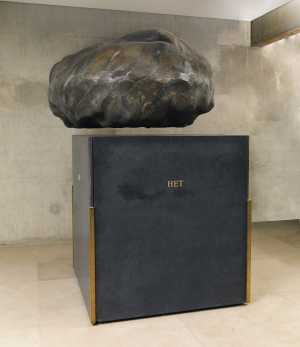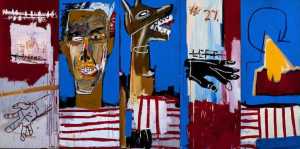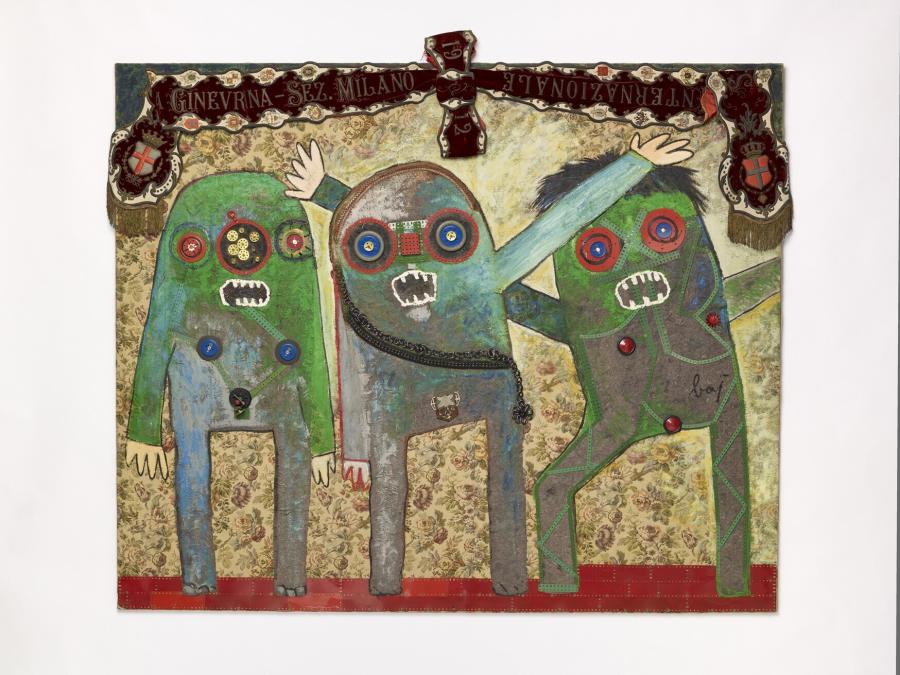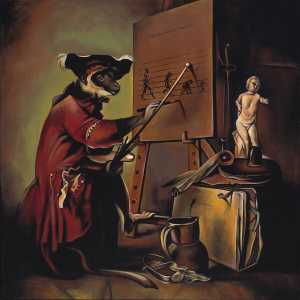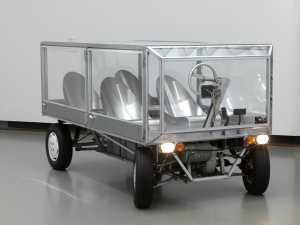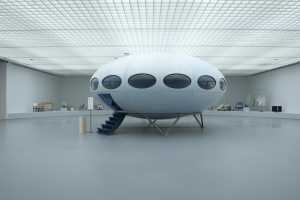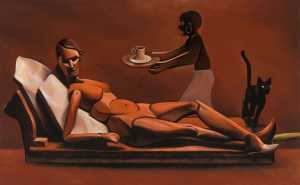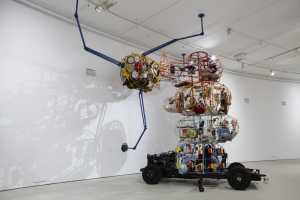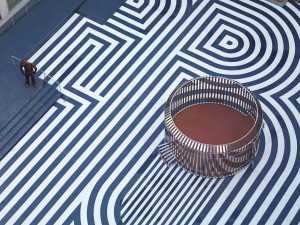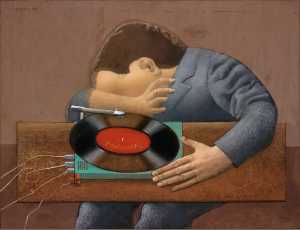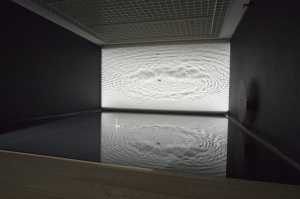Author: Katinka Duffhuis
Around 1958 the Italian artist Enrico Baj made a number of paintings featuring mountainous figures. They call to mind human silhouettes, even though they have no obvious faces or pronounced body parts. When Baj rediscovered one of these works in his studio in 1960 he was so displeased by the sorrow it radiated that he decided to change it. The artist gave the work a real sash, a holster, a wig, medals and medallions of honour.[1] In so doing, he changed the mountainous figure into a general. This marked the creation of the first Generalissimo: the archetype for the series of generals that he created in his work from the 1960s onwards, which also includes Il comitato. Baj decked out the generals with all kinds of military paraphernalia and positioned them against a baroque background that refers to the comfort of the bourgeoisie. Although the figures are portrayed screaming, they look foolish. The artist was mocking the power and stature of the Italian army, and commenting on the phenomenon of war. Baj wanted these aggressive, yet ridiculous generals to get viewers thinking: ‘never again, no more war ever’.[2]
In the late 1950s Baj’s gallerist Arturo Schwarz introduced him to artists from the Surrealist movement, including André Breton, whom he met in Paris. Breton was impressed by Baj’s work and invited him to take part in exhibitions staged by the Surrealists.[3] In 1960 Breton and Marcel Duchamp included his work in the exhibition Surrealist Intrusions in the Enchanter’s Domain (D’Arcy Galleries, New York). Breton also wrote two essays about Baj, in which he referred to the Generalissimos: ‘Quite recently various incarnations of the “general in full dress uniform” can be discerned in Baj’s oeuvre, unforgettably translated by Péret as “a John Dory full of grief”’.[4] He compared Baj’s Meccano figures to Père Ubu, the antagonist in Alfred Jarry’s play Ubu Roi (1896), which was praised by the Surrealists. Baj was one of the last artists whom Breton himself regarded as a Surrealist before his death in 1966.[5]
In the spring of 1973 Museum Boijmans Van Beuningen staged the controversial exhibition I funerali dell'anarchico Pinelli (Funeral of the Anarchist Pinelli), centred on Baj’s work of the same name, which measured a massive three metres by twelve, and supplemented it with various preliminary studies. The central figure in this artwork was Giuseppe ‘Pino’ Pinelli, an Italian anarchist who fell out of a window of the Milan police headquarters in suspicious circumstances in 1969 and was killed.[6] Initially the exhibition was to have been staged in Milan, but it was cancelled because of the political sensitivity there. The exhibition in Rotterdam prompted Baj to gift his entire graphic oeuvre to the museum. At a meeting of the museum’s Supervisory Committee later that year it was decided, in part because of this important gift, to acquire a painting by this artist for the collection. To begin with the committee discussed Le modelle of 1971, a painting from a later period, but the majority of the members of the committee were inclined towards an earlier, more aggressive and hence more characteristic artwork. In consultation with the artist they chose Il comitato.[7]




